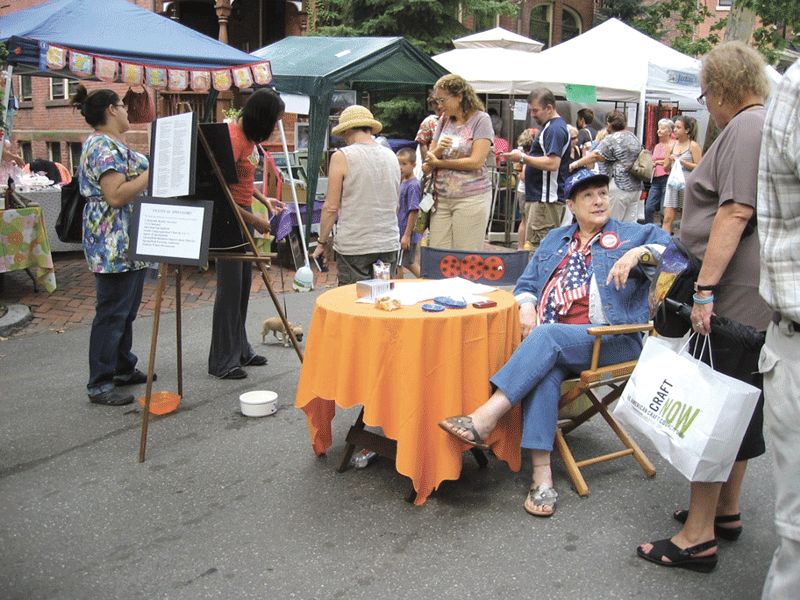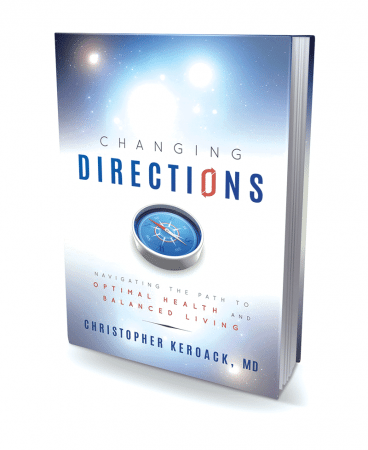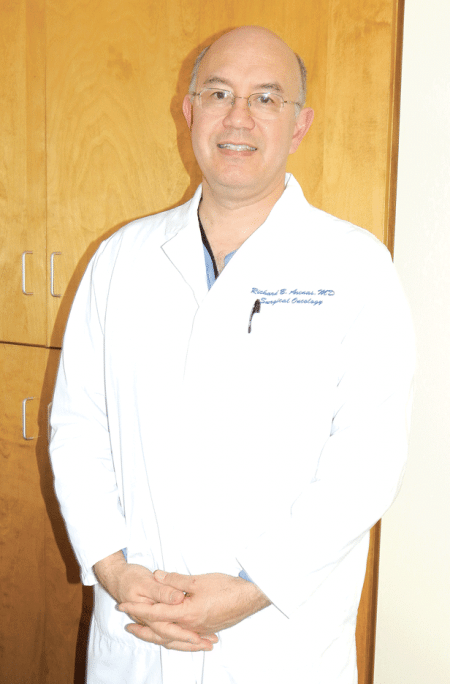What Summertime Blues?

In the mood for some live music or theater? Or are art shows and antiques more your style? How about clambering through the trees or soaring on roller-coaster tracks? Whatever your taste, Western Mass. boasts plenty of ways to enjoy the summer months, making any day potentially a vacation day. Here are 25 ideas to get you started, in a region that’s home to many, many more.
July
> Berkshires Arts Festival
Ski Butternut, 380 State Road, Great Barrington
(845) 355-2400; www.berkshiresartsfestival.com
Admission: $7-$14; free for children under 10
July 1-3: Ski Butternut may be best-known for … well, skiing, of course. But the property also plays host to the Berkshires Arts Festival, a regional tradition now in its 15th year. Thousands of art lovers and collectors are expected to stop by to check out and purchase the creations of more than 175 artists and designers, as well as experiencing theater and music from local and national acts. Founded by Richard and Joanna Rothbard, owners of An American Craftsman Galleries, the festival attracts top artists from across the U.S. and Canada.
 >Fireworks Shows Various Locations
>Fireworks Shows Various Locations
July 1-4: Independence Day weekend is brimming with nighttime pageantry throughout the Pioneer Valley. The Valley Blue Sox in Holyoke kick things off with fireworks following its July 1 game. July 2 brings displays at Beacon Field in Greenfield, while on June 3, Michael Smith Middle School in South Hadley and East Longmeadow High School get into the act. July 4 will bring the spectacle to Riverfront Park in Springfield and McGuirk Stadium at UMass Amherst. And Six Flags in Agawam will light up the night on July 2, 3, and 4.
> Brimfield Antique Show
Route 20, Brimfield
(413) 283-6149; www.brimfieldshow.com
Admission: Free
July 12-17, Sept. 6-11: After expanding steadily through the decades, the Brimfield Antique Show now encompasses six miles of Route 20 and has become a nationally known destination for people to value antiques, collectibles, and flea-market finds. Some 6,000 dealers and close to 1 million total visitors show up at the three annual, week-long events; the first was in May. The Brimfield Antique Show labels itself the “Antiques and Collectibles Capital of the United States,” and — judging by its scope and number of visitors — it’s hard to disagree.
 > Glasgow Lands Scottish Festival
> Glasgow Lands Scottish Festival
Look Park, 300 North Main St., Florence
(413) 862-8095; www.glasgowlands.org
Admission: $16; $5 for children 6-12; free for kids under 6
July 16: This 23nd annual festival celebrating all things Scottish features Highland dancers, pipe bands, a pipe and drum competition, animals, spinners, weavers, harpists, Celtic music, athletic contests, activities for children, and the authentically dressed Historic Highlanders recreating everyday life in that society from the 14th through 18th centuries. Inside the huge ‘pub’ tent, musical acts Enter the Haggis, Soulsha, Albannach, Screaming Orphans, and Charlie Zahm will keep toes tapping in the shade. Event proceeds benefit programs at Human Resources Unlimited and River Valley Counseling Center.
> Pioneer Valley Beer & Wine Festival
Look Park, 300 North Main St., Florence
(413) 584-5457; www.lookpark.org
Admission: $35 in advance, $40 at the door
July 30: Hungry — or thirsty — for something to do as the dog days of summer take hold? Look Park presents its first annual Beer & Wine Festival at the Pines Theater from noon to 4 p.m. Attendees (over age 21 with ID) will get to sample local beer and wine from the Pioneer Valley, live music, and food vendors including Local Burger, La Veracruzana, and Sierra Grille.
August
> Pocumtuck Homelands Festival
Unity Park, 1st Street, Turners Falls
(413) 498-4318; www.nolumbekaproject.org
Admission: Free
Aug. 6: This annual celebration of the parks, people, history, and culture of Turners Falls is a coordinated effort of the Nolumbeka Project and RiverCulture. The event features outstanding Native American crafts, food, and live music by Theresa ‘Bear’ Fox, Mohawk (Wolf Clan), ‘wave artist’ Mixashawn, the Medicine Mammals Singers, and Kontiwennenhawi, the Akwasasne Women Singers. Also featured will be the Black Hawk Singers, the Visioning B.E.A.R. Circle Intertribal Coalition Singers, a Penobscot hoop dancer, round dancing, elder teachings, craft activities, storytelling, and traditional dances. The Nolumbeka Project aims to preserve regional Native American history through educational programs, art, history, music, heritage seed preservation, and cultural events.

> Springfield Jazz & Roots Festival
Court Square, Springfield
(413) 303-0101; springfieldjazzfest.com
Admission: Free
Aug. 6: The third annual Springfield Jazz & Roots Festival will offer a festive atmosphere featuring locally and internationally acclaimed musical artists, dance and theater workshops, local arts and crafts, and plenty of food. More than 5,000 people are expected to attend and enjoy the sounds of jazz, Latin jazz, gospel, blues, funk, and more. Featured performers include Taj Mahal, Eric Krasno Band, Joey DeFrancesco Trio, Terri Lyne Carrington Group, Samirah Evans and Her Handsome Devils, Rayvon Owen, Heshima Moja and Ofrecimiento, and Jose Gonzalez and Banda Criolla. The festival is produced by Blues to Green, which uses music to bring people together, uplift and inspire, and help build a more equitable and sustainable world.
Starting in late August and extending through September, the region’s community agricultural fairs are a much-loved tradition, promoting agriculture education in Western Mass. and supporting the efforts of local growers and craftspeople. The annual fairs also promise plenty of family-oriented fun, from carnival rides to animal demonstrations to food, food, and more food. The Westfield fair kicks things off Aug. 19-21, followed by the Blandford Fair and the Three County Fair in Northampton on Sept. 2-5, the Franklin County Fair in Greenfield on Sept. 8-11, and the Belchertown Fair on Sept. 23-25.
September
> Stone Soul Festival
Blunt Park, 1780 Roosevelt Ave., Springfield
(413) 636-3881; www.ssfestival.weebly.com
Admission: Free
Sept. 2-4: Stone Soul began in 1989 as a community reunion picnic aimed at gathering together the Mason Square Community. It has since evolved into a three-day event, and New England’s largest African-American festival. Stone Soul aims to provide family-oriented activities, entertainment, and cultural enrichment, and is a vehicle for minority-owned businesses to display their wares and crafts. Entertainment includes gospel, jazz, R&B, and dance. Sunday’s free picnic includes ribs and chicken cooked by talented pitmasters, as well as barbecued beans, cole slaw, and more, with the backdrop of an afternoon of live gospel music performed by local and regional choirs.
 > Mattoon Street Arts Festival
> Mattoon Street Arts Festival
Mattoon St., Springfield
(413) 736-0629
www.mattoonfestival.org
Admission: Free
Sept. 10-11: Now in its 44th year, the Mattoon Street Arts Festival is the longest-running arts festival in the Pioneer Valley, featuring about 100 exhibitors, including artists that work in ceramics, fibers, glass, jewelry, painting and printmaking, photography, wood, metal, and mixed media. Food vendors and strolling musicians help to make the event a true late-summer destination.
> Glendi
22 St. George Road, Springfield
(413) 737-1496
www.stgeorgecath.org/glendi
Admission: Free
Sept. 9-11: Every year, St. George Cathedral offers thousands of visitors the best in traditional Greek foods, pastries, music, dancing, and old-fashioned Greek hospitality. In addition, the festival offers activities for children, tours of the historic St. George Cathedral and Byzantine Chapel, various vendors from across the East Coast, icon workshops, movies in the Glendi Theatre, cooking demonstrations, and a joyful atmosphere the whole family will enjoy.
> Fresh Grass
1040 MASS MoCA Way, North Adams
(413) 662-2111; www.freshgrass.com
3-day pass: $99 for adults, $89 for students, $46 for ages 7-16
Sept. 16-18: The Massachusetts Museum of Contemporary Art is known for its musical events, and the Fresh Grass festival is among the highlights, showcasing more than 50 bluegrass artists and bands over three days. This year, the lineup includes Old Crow Medicine Show, Glen Hansard, Ricky Skaggs & Kentucky Thunder, The Devil Makes Three, Rosanne Cash, the Infamous Stringdusters, and many, many more. Also on tap are new-artist competitions (with prizes totaling $25,000) and bluegrass workshops open to festival attendees.
All Summer Long
> Berkshire
Botanical Garden
5 West Stockbridge Road, Stockbridge
(413) 298-3926
www.berkshirebotanical.org
Admission: $15; free for kids under 12
Through Oct. 10: If the flora indigenous to, or thriving in, the Berkshires of Western Mass. is your cup of tea, try 15 acres of stunning public gardens at the Berkshire Botanical Garden in Stockbridge. Originally established as the Berkshire Garden Center in 1934, today’s not-for-profit, educational organization is both functional and ornamental, with a mission to fulfill the community’s need for information, education, and inspiration concerning the art and science of gardening and the preservation of the environment. In addition to the garden’s collections, among the oldest in the U.S., visitors can enjoy workshops, special events, and guided tours.
> CityBlock Concert Series
Worthington and Bridge streets, Springfield
(413) 781-1591
www.springfielddowntown.com/cityblock
Admission: Free
Through Aug. 25: Downtown Springfield’s annual Thursday-evening summer music series is again studded with a mix of national touring acts and local lights, starting with FAT on June 30 in Court Square. The shows then move to Stearns Square for the rest of the summer, and include Ricky Nelson Remembered (July 7), Forever Motown (July 14), the Machine (July 21), Natalie Stovall and the Drive (July 28), Terry Sylvester (Aug. 4), Max Creek (Aug. 11), Blessid Union of Souls (Aug. 18), and the Shadowboxers (Aug. 25). The presenting sponsor for the shows is MassMutual, and the series is presented by the Springfield Business Improvement District. See article on page 27 for more information.
> Crab Apple
Whitewater Rafting
2056 Mohawk Trail, Charlemont
(413) 625-2288; www.crabapplewhitewater.com
Admission: $110-$116 through Sept. 11; $99 after Sept. 11
Through Oct. 9: Wanna get wet? Crab Apple is a third-generation, multi-state family business that operates locally on the Deerfield River in the northern Berkshire Mountains of Western Mass. Its five separate rafting excursions range from mild to wild, full- or half-day runs, in rafts and inflatable kayaks. In short, Crab Apple offers something for everyone, from beginners to more experienced rafters.
> Hancock Shaker Village
1843 West Housatonic St., Pittsfield
(413) 443-0188; www.hancockshakervillage.org
Admission: $8-20; free for children 12 and under
Through October: In 1774, a small group of persecuted English men and women known as the Shakers — the name is derived from the way their bodies convulsed during prayer — landed in New York Harbor in the hopes of securing religious freedom in America. Nearly 250 years later, their utopian experiment remains available to the public in the restored 19th-century village of Hancock. Through 20 refurbished buildings and surrounding gardens, Shaker Village illuminates the daily lives of its highly productive inhabitants. After spending a day in the recreated town, visitors will surely gain a greater appreciation of the Shakers’ oft-forgotten legacy in the region.
 > Jacob’s Pillow Dance Festival
> Jacob’s Pillow Dance Festival
358 George Carter Road, Becket
(413) 243-0745; www.jacobspillow.org
Admission: $25 and up
Through Aug. 30: Now in its 84rd season, Jacob’s Pillow has become one of the country’s premier showcases for dance, featuring more than 50 dance companies from the U.S. and around the world. Participants can take in scores of free performances, talks, and events; train at one of the nation’s most prestigious dance-training centers; and take part in community programs designed to educate and engage audiences of all ages. This year’s events introduce a quirky, charming company from Germany, the explosive footwork of South American gauchos, inspiring ballet companies from across the U.S., astounding flex dancers from the streets of Brooklyn, and 12 high-flying men from Algeria — plus, more live music than ever before. See article on page 25 for more information.
> Lady Bea Cruise Boat
1 Alvord St., South Hadley
(413) 315-6342; www.brunelles.com
Admission: $10-$15; free for kids 3 and under
Through Labor Day: If you’re in the mood for a scenic meander up and down the Connecticut River, consider the Lady Bea, a 53-foot, 49-passenger, climate-controlled boat operated by Brunelle’s Marina, which typically runs Thursday through Sunday between South Hadley and Northampton. If you don’t feel like sharing the 75-minute narrated voyage with others, rent the boat out for a private excursion. Amenties include a PA system, video monitors, a full bar, and seating indoors and on the sun deck — but the main attraction is the pristine water, sandy beaches, and unspoiled views along the river.
 > Mahaiwe Performing
> Mahaiwe Performing
Arts Center
14 Castle St., Great Barrington
(413) 528-0100; www.mahaiwe.org
Admission: Varies by event
Year-round: The beloved Mahaiwe Theatre dates back to 1905 — continuously running programs since its opening — and underwent an extensive, $9 million renovation starting in 2003. Today, the theater seats just under 700 and hosts year-round arts programming, including music, dance, theatre, opera, talks, and movie classics. It’s leaders say Mahaiwe is a staple and a resource: its live performances inspire tens of thousands of audience members each year, its family and educational events are vital to the region, its embrace of modern technology supplements programming with live, high-definition satellite broadcasts from around the world, and its year-round schedule enhances the quality of life for those who reside in and visit the Berkshires.
> Nash Dinosaur
Track Site and
Rock Shop
594 Amherst Road, South Hadley
(413) 467-9566; www.nashdinosaurtracks.com
Admission: $3 for adults; $2 for children
Year-round: Walk where the dinosaurs walked, literally. It’s hard to believe that the first documented dinosaur tracks found in North America were on the shores of the Connecticut River, in 1802, near today’s site of Nash Dinosaur Track Site and Rock Shop in South Hadley. Over the years, thousands of dinosaur tracks have been discovered; many were sold to museums and private individuals all over the world, but many more can be seen due to the extensive work of Carlton S. Nash. Visit the site and learn about some of this region’s earliest inhabitants, and also about the geology of the area.
 > New England Peace Pagoda
> New England Peace Pagoda
100 Cave Hill Road, Leverett
(413) 367-2202
www.newenglandpeacepagoda.com
Admission: Free
Year-round: A Peace Pagoda is a Buddhist stupa, a monument to inspire peace, designed to provide a focus for people of all races and creeds, and to help unite them in their search for world peace. Most peace pagodas built since World War II have been built under the guidance of Nichidatsu Fujii, a Japanese Buddhist monk. Fujii was greatly inspired by his meeting with Mahatma Gandhi in 1931 and decided to devote his life to promoting non-violence. In 1947, he began constructing peace pagodas as shrines to world peace.
> Ramblewild
110 Brodie Mountain Road, Lanesborough
(844) 472-6253; www.ramblewild.com
Admission: $69 for adults, $59 for youth
Year-round: Aerial parks are an outdoor activity in and among the trees that offer excitement, challenge, and personal growth for families and adventurists of all kinds. At Ramblewild, the focal point is a central wooden platform about 10 feet above the ground from which eight aerial obstacle courses originate, meandering from tree to tree at various heights through the forest. Each course consists of 15 to 17 elements (high wires, ziplines, balancing logs, rope ladders, cargo nets, suspended bridges, etc.) that meander through a pristine hemlock forest. These tree-to-tree challenge courses are designed to have a profound impact on visitors’ self-confidence — while having lots of fun, of course.
 > Six Flags New England
> Six Flags New England
1623 Main St., Agawam
(413) 786-9300
www.sixflags.com/newengland
Admission: $61.99; season passes $91.99
Through oct. 31: Continuing an annual tradition of adding a new major attraction each spring, Six Flags New England recently unveiled Fireball, a looping coaster, and rethemed Bizarro to its original Superman motif, adding a virtual-reality component (via goggles) to boot. Other recent additions include the Wicked Cyclone, the 420-foot-tall New England Sky Screamer swings, the 250-foot Bonzai Pipeline enclosed waterslides, and the massive switchback coaster Goliath — in addition to a raft of other thrill rides. But fear not: the park has attractions for everyone along the stomach-queasiness spectrum, from the classic carousel and bumper cars to the wave pools and lazy river in the Hurricane Harbor water park, free with admission.
> Valley Blue Sox
Mackenzie Stadium
500 Beech St., Holyoke
(413) 533-1100
www.valleybluesox/pointstreaksites.com
Admission: $4-$6; season tickets $79
Through Aug. 1: Western Mass. residents don’t have to trek to Boston to catch quality baseball. The Valley Blue Sox, members of the New England Collegiate Baseball League, play close to home at MacKenzie Stadium in Holyoke. These Sox feature a roster of elite collegiate baseball players from around the country, including some who have already been drafted into the major leagues. Frequent promotional events like postgame fireworks and numerous giveaways help make every game at MacKenzie Stadium a fun, affordable event for the whole family.
> Williamstown Theatre Festival
1000 Main St., Williamstown
(413) 597-3400; www.wtfestival.org
Admission: $40 and up
Through Aug. 21: Six decades ago, the leaders of Williams College’s drama department and news office conceived of an idea: using the campus’ theater for a summer performance program with a resident company. Since then, the festival has attracted a raft of notable guest performers. This season will spotlight a range of both original productions and plays by well-known lights such as Tennessee Williams (The Rose Tattoo) and Wendy Wasserstein (An American Daughter), as well as a number of other programs, such as post-show Tuesday Talkbacks with company members.
Joseph Bednar can be reached a [email protected]






 Keroack is board-certified in internal medicine and bariatric (weight-management) medicine, and originally built his practice around weight loss, moving gradually into a broader wellness focus, where patients lose weight as just one benefit of a total lifestyle shift. But in addition to his formal training, he has certifications from the Institute of Functional Medicine and the Cenegenics Education and Research Foundation for Age Management Medicine.
Keroack is board-certified in internal medicine and bariatric (weight-management) medicine, and originally built his practice around weight loss, moving gradually into a broader wellness focus, where patients lose weight as just one benefit of a total lifestyle shift. But in addition to his formal training, he has certifications from the Institute of Functional Medicine and the Cenegenics Education and Research Foundation for Age Management Medicine.

 >Fireworks Shows Various Locations
>Fireworks Shows Various Locations > Glasgow Lands Scottish Festival
> Glasgow Lands Scottish Festival
 > Mattoon Street Arts Festival
> Mattoon Street Arts Festival > Jacob’s Pillow Dance Festival
> Jacob’s Pillow Dance Festival > Mahaiwe Performing
> Mahaiwe Performing > New England Peace Pagoda
> New England Peace Pagoda > Six Flags New England
> Six Flags New England







